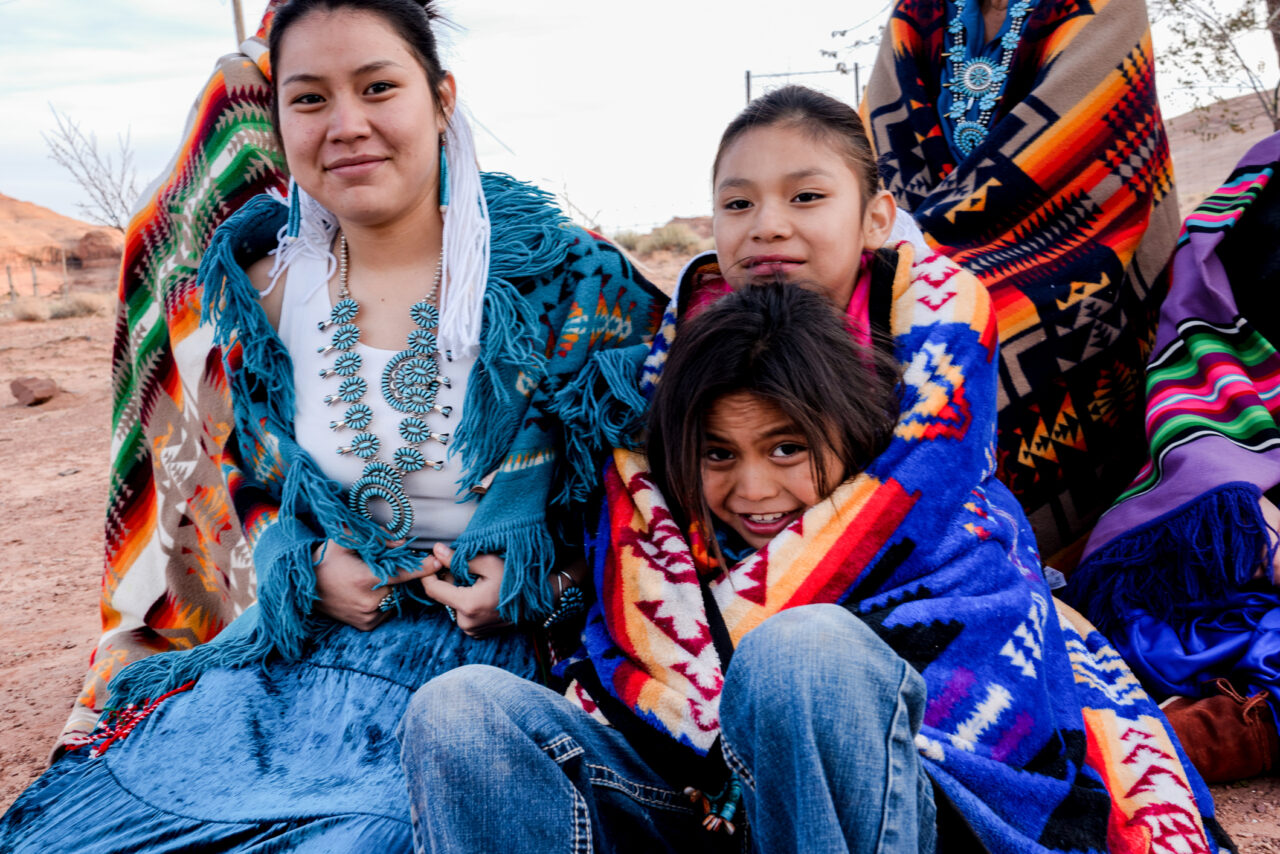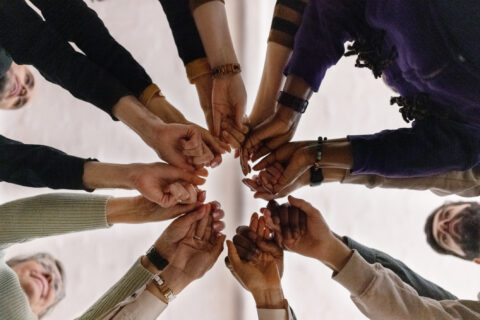By: Sigvanna Tapqaq, Nome, AK, Common Council Member Leadership Circle Member/ NLC Local Indigenous Leaders (LIL)
Introduction
May 5th is Missing and Murdered Indigenous Persons (MMIP) Day, most widely celebrated across the U.S. and Canada. To commemorate the day, individuals wear red, attend marches, rallies, bike rides, fundraisers, and more to raise awareness for the MMIP cause and advocate against this injustice happening to Native women and their families every day.
Many abbreviations are used around this issue: Missing and Murdered Indigenous Persons (MMIP), Missing and Murdered Indigenous Women (MMIW), Missing and Murdered Indigenous Women and Girls (MMIWG), Missing and Murdered Indigenous Relatives (MMIR), Missing and Murdered Indigenous Women, Girls, and Two-Spirit (MMIWG2S). While each abbreviation is slightly different, they all make note of the fact that Indigenous people are victims of violence at much higher rates than other U.S. populations.
History
For years, Tribal citizens and grassroots organizations have sought to bring attention to the issues. Listening sessions, tribal leaders, advocates, law enforcement, community members, and others raised concerns about the disappearance or murder of American Indian and Alaska Native people across the United States. States have only recently recognized these concerns, taking action through legislation, state-level task forces, and tribally-based field hearings.
In 2017, Senators Steve Daines and Jon Tester of Montana introduced a resolution recognizing May 5 as a National Day of Awareness for Missing and Murdered Native Women and Girls.
Source: National Indigenous Women’s Resource Center
Individual federal agencies also responded, with the Department of Justice (DOJ), Department of the Interior (DOI), and Department of Health and Human Services (HHS) all proposing solutions. In 2021, President Biden issued a proclamation designating May 5th as Missing and Murdered Indigenous Persons (MMIP) Awareness Day.
Several bills have also been introduced in Congress to address MMIP and the related issues of domestic violence and sexual assault. Savanna’s Act and the Not Invisible Act were both passed in October 2020. Savanna’s Act aims to improve the response to missing and murdered Native Americans by requiring the DOJ to provide training to Tribes and law enforcement agencies and develop guidelines for implementing a better response to cases of missing or murdered Native Americans. The purpose of the Not Invisible Act is to identify and combat violent crime within Indian lands and against Indians through the creation of a joint commission, requiring the designation of an official within the Bureau of Indian Affairs to coordinate prevention efforts.
The Not Invisible Act mandates the creation of an advisory committee on violent crime against American Indians and Alaska Natives.
Source: Indian Resource Center
The Family Violence Prevention and Services Improvement Act of 2021 has only passed in the House of Representatives. The improvements to the act would expand grant programs and make many needed improvements so that more survivors have access to support and safety.

Native women continue to go missing and are murdered at alarming rates. In 2016, The National Crime Information Center reported there were 5,712 reports of missing American Indian and Alaska Native women and girls. Only 116 of those cases ever made it into the U.S. Department of Justice’s federal missing persons database, NamUs. As of 2018, there is no database system in the United States that tracks how many Indigenous women have been abducted and/or murdered.
Quality data is severely lacking at both the federal and local levels. The Urban Indian Health Institute (UIHI) published a report in 2018 documenting the cases of Missing and Murdered Indigenous Women across 71 cities. UIHI identified 506 unique cases of missing and murdered American Indian and Alaska Native women and girls across the 71 selected cities—128 (25%) were missing person cases, 280 (56%) were murder cases, and 98 (19%) had an unknown status. Approximately 75% of the cases UIHI identified had no Tribal affiliation listed in their official case records. In addition, UIHI found 153 cases that were not in law enforcement records at all. Collecting this data took FOIA requests, news reports, social media, and advocacy sites as well as direct contact with families and community members. Of the perpetrators UIHI was able to identify, 83% were male and approximately half were non-Native. Only 38% of these perpetrators were ever convicted. 28% of these perpetrators were never found guilty or held accountable.
Nome, AK’s Experience
In August 2003, Sonya Ivanoff, a young Alaska Native woman, went missing in Nome, AK, and was found murdered a few days later. The person convicted of her murder was a local police officer, Matthew Clay Owens. A key witness in the case reported that a tip was not followed up on for several weeks. Owens tried to cover up the crime by stealing a police vehicle and staging another crime where he was the alleged victim. The first trial resulted in a mistrial, but Owens was tried again and convicted.
Another Alaska Native woman, Florence Okpealuk, went missing in 2020 and has yet to be found. Florence left behind a young daughter, and law enforcement, as well as community members, mobilized to search for her for months before having to pause the search due to winter weather. No updates have been shared with the public since late fall 2020.
Alaska Native women who are part of law enforcement are also victims of violence. In 2020, Clarice Hardy sued the city for mishandling her 2017 sexual assault case, as well as hundreds of others. The city settled the case for $750,000 in March 2022. As with the MMIP crisis, law enforcement often fails to respond. This leads Alaska Native women, including Nome Common Council Member Sigvanna Tapqaq, to not report when they are sexually assaulted.

Sonya’s and Florence’s cases represent an epidemic of injustice for American Indian and Alaska Native women who have been failed by the criminal justice system. This has been devastating and weighs heavily on the community. In Nome and other Alaskan communities, many Alaska Native people have a deep mistrust of law enforcement that emerges from a long history of discrimination and unjust outcomes. When Nome was founded in 1901, Alaska Natives were not considered citizens without abandoning tribal customs and relationships and obtaining a certificate from five white citizens.
In addition, law enforcement and city council demographics do not reflect the diversity of the Nome community, which is 59% Alaska Native. When including individuals who identify as “mixed,” this number approaches 67%.
Many law enforcement officers are not from the community and may not live full-time in the community. Thus, they may not understand the complex history of Nome or its Indigenous peoples. Meghan “Sigvanna” Tapqaq was the only Alaska Native serving on the Nome Common Council from 2018 to 2022 when Council Member Cameron Piscoya was elected, followed by Council Member Maggie Miller in 2023.

Nome City Officials have recognized that they need to do better and are open to rebuilding trust with the community. The city has embraced the community’s involvement in searching for Florence and wants to hold it accountable. Funds have been used to equip law enforcement with body cameras and to increase the number of community service officers who do not carry guns and are more involved with the community. Since 2018, when a group of women approached the city with concerns about the lack of response to sexual assault and domestic violence cases, the city has drastically decreased its backlog of open (and unprocessed) sexual assault cases. The city has also worked to obtain certification for law enforcement, ensuring they follow best practices and keep policies and training up to date.
Another crucial step the city took was to create a Public Safety Advisory Commission to guide the Common Council in making decisions. The Commission reflects the diverse racial, religious, and gender identities of the community. Nome also participated in a summit with the U.S. Department of Justice focused on MMIP and helped compile a list of all the Alaska Natives who had gone missing or been murdered in their community.
Continued Action
There is still more to do to repair the relationship between the city and Alaska Native residents and to protect Indigenous women. At present, no level of the justice system is serving Alaska Native or American Indian women. Community action plans need to be created to standardize processes for conducting searches and appropriately involving community members. Nome and other cities can also formalize government-to-government relationships with neighboring Tribes and implement racial equity training for elected officials and city staff, including those responsible for public safety.

The VAWA Reauthorization Act of 2022 expanded special Tribal criminal jurisdiction (STCJ) to cover non-Native perpetrators of sexual assault, child abuse, stalking, sex trafficking, and assaults on Tribal law enforcement officers on Tribal lands. It also authorized a pilot project to enhance access to safety for survivors in Alaska Native villages. The Department of Justice moved quickly to identify and deploy resources to support Tribal implementation of STCJ, including issuing or announcing awards for new technical assistance and to establish an Alaska-specific Intertribal Technical Assistance Working Group. DOJ’s Office on Violence Against Women (OVW) also issued an interim final rule to reimburse Tribes for expenses incurred in exercising STCJ, which will permit OVW to administer the Tribal Reimbursement Program starting in 2024.
This critically important work must be ongoing.
Further Reading and Resources
- National Week of Action for MMIW Social Media Toolkit 2022
- Native Hope – Missing and Murdered Indigenous Women (MMIW)
- U.S. Department of Justice – Operation Lady Justice Summary Fact Sheet
- National Indigenous Women’s Resource Center – 2022 National Week of Action for MMIW
- Data For Indigenous Justice
- First Alaskans Institute







